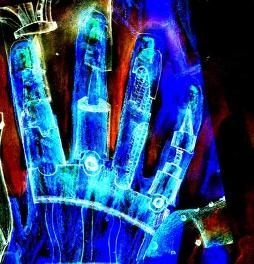
Recently the New Scientist magazine predicted that by 2039 the X-Ray vision and invisibility cloak could be used in everyday life. The magazine listed a number of latest scientific and technological inventions that in the near future could be used by people.
Researches that are currently performed on ultrasound will make the X-Ray vision in humans possible, giving the possibility to virtually see through walls. As for the invisible cloaks then, experts believe these will be available in the shops by 2039. The technology used in the invisibility cloaks, which are currently tested by scientists, tricks the human eye by altering the light waves. Read more here: Invisibility is now one step closer.
The list also includes a replication of a gecko's foot, which scientist will create for gloves and boots, making it possible for people to easily climb walls by sticking to them just like the Spiderman.
The magazine's representatives interviewed scientists to discover that within 30 years the world will observe world's first handheld language-translating device that will instantly convert foreign words that are heard by its user. The invention will resemble the "Babel Fish" in The Hitchhiker's Guide to the Galaxy.
It is worth mentioning that New Scientist magazine collected information about the latest inventions in science to mark the 30th anniversary of the first cellular network that was launched in Japan back in 1979.
Experts also included in their list an invention called "handheld healing machine", which can identify and instantly heal internal injuries in a human body.
In 2039 scientists also predict that people will use readily-available jet pack which will help users fly short distances avoiding being stuck in traffic jam.
Experts also predict that humans will use a device able to gather human energy and utilize it to charge cell phones and iPods.
The authors of the article in the scientific magazine mention that in 30 years time the upper mentioned scientific and technological inventions might have a great influence on our life and their impact could be even bigger than mobile phones, the Internet and the iPods.



